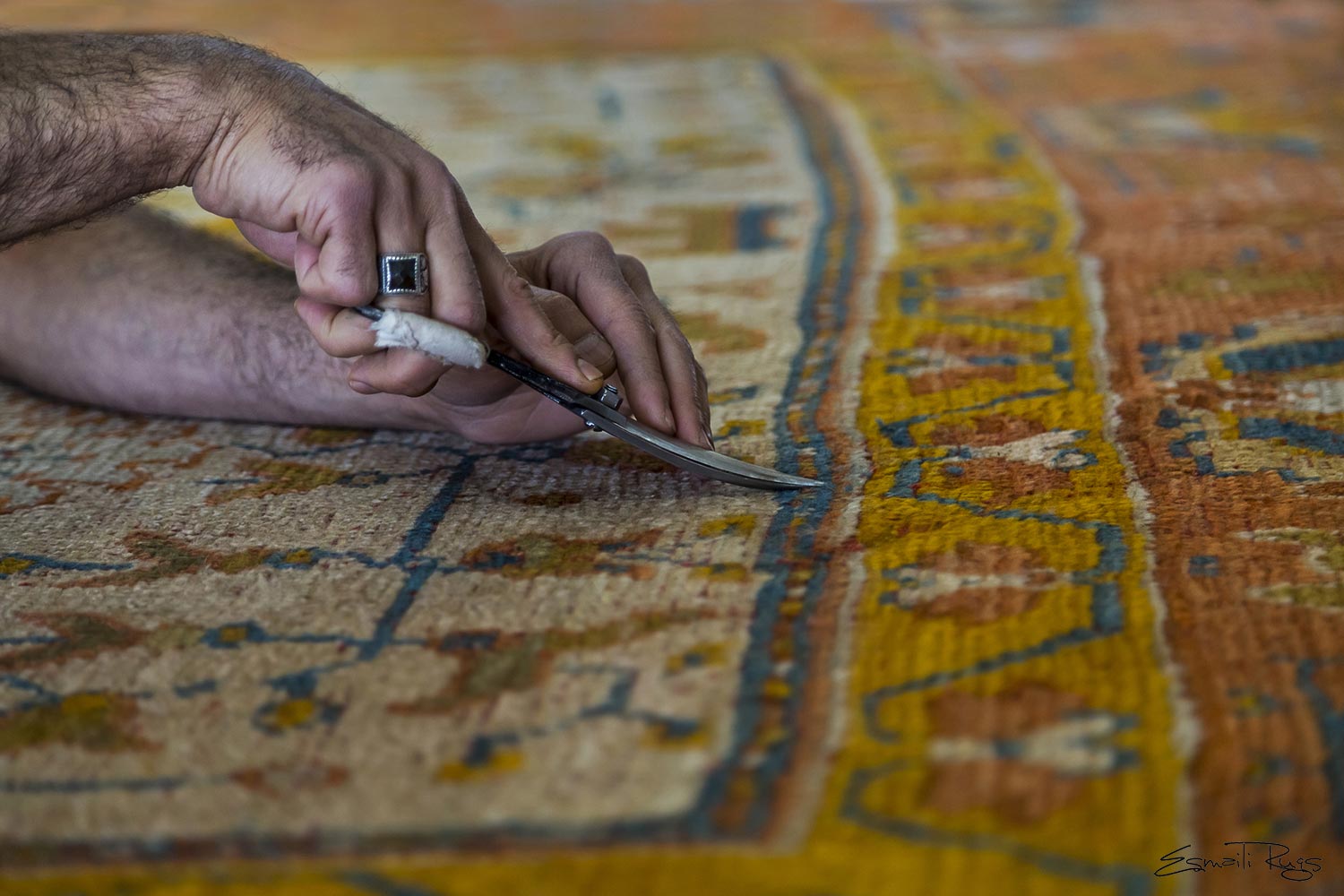Oriental Rug Restoration and Repair: When and How?
Are you the proud owner of a stunning Oriental rug that has seen better days? Don’t worry, you’re not alone! Over time, these vibrant and exquisite rugs may start showing signs of wear and tear. But fear not! In this blog post, we will delve into the world Oriental rugs restoration and repair – uncovering when it’s necessary to take action and discovering the best methods for bringing your beloved masterpiece back to its former glory. So, if you’re ready to set foot on an exciting journey through centuries-old techniques and modern restoration marvels, join us as we dive deep into the realm of preserving these timeless treasures.
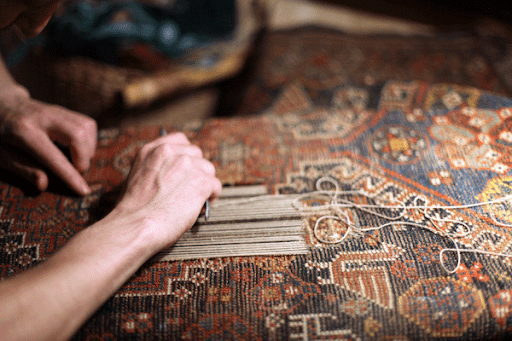
Oriental rugs are not just functional home décor items, they are also valuable investments that require proper care and maintenance. Over time, these beautiful rugs may start to show signs of damage and wear due to regular use, foot traffic, and exposure to environmental factors. It is important for rug owners to be aware of these signs in order to address any issues before they become irreparable.
Here are some common signs of damage and wear that may be observed on Oriental rugs:
- Fading or Discoloration: Exposure to sunlight can cause the colors on an Oriental rug to fade over time. This may result in uneven patches of discoloration on the rug’s surface.
- Fraying or Loss of Pile: Constant foot traffic can cause the pile (the fibers that make up the top layer of the rug) to wear down or fray along the edges of the rug. This can make the rug look worn out and may even lead to holes in severe cases.
- Stains or Spots: Spills and stains from food, beverages, or pets can leave permanent marks on your Oriental rug if not cleaned immediately. These spots can be particularly difficult to remove without professional help.
- Moth Damage: Moths are a common enemy for Oriental rugs as their larvae feed on wool fibers which make up most traditional rugs. If left untreated, this damage can lead to holes and thinning areas on your precious rug.
- Mold/Mildew Growth: Humidity levels in a room with poor ventilation can create a damp environment which is perfect for mold/mildew growth on your oriental rug’s foundation fibers if it is exposed for extended periods.
- Odor: A musty odor coming from your Oriental rug could indicate mold/mildew growth or pet urine contamination which requires immediate attention.
- Selvedge Damage: The selvedges (edges) of an oriental rug contain the foundation threads that hold the rug together. If these are damaged or frayed, it can cause the entire rug to unravel over time.
Ensuring regular inspections of your Oriental rugs for signs of damage and wear is key to averting further deterioration. Immediate action is necessary upon identifying any such issues, to facilitate the restoration and repair of your rug before the damage becomes permanent. For those seeking an in-depth understanding of rug care, especially for Oriental rugs, The Textile Museum offers a treasure trove of educational resources. These materials not only delve into the historical aspects of rug care but also provide practical advice for their upkeep, ensuring your valuable textiles remain in pristine condition.
In the next section, we will discuss when and how to properly restore and repair Oriental rugs based on the type and extent of damage they have incurred.
When to Consider Your Oriental Rug Restoration or Repair
When it comes to preserving and maintaining your oriental rugs, restoration or repair may be necessary at some point. But how do you know when it’s time to consider these options? In this section, we will discuss the factors that can help you determine when to opt for restoration or repair for your oriental rug.
One of the main indicators for considering restoration or repair is the overall condition of the rug. Over time, oriental rugs can experience wear and tear due to foot traffic, exposure to sunlight, and other environmental factors. If your rug has noticeable signs of damage such as holes, tears, fraying edges, or color fading, it may be a good idea to explore restoration or repair options.
Another factor to consider is the age of your rug. Oriental rugs are known for their durability and longevity but even they have a lifespan. If your rug is several decades old and has started showing signs of deterioration, it may benefit from restoration work. This not only helps in preserving its historical value but also ensures its continued use for many years to come.
Additionally, if you notice any structural issues with your rug such as loose threads or uneven weaving patterns, it’s best to address them sooner rather than later. Ignoring these problems can lead to further damage and potentially compromise the integrity of the rug.
Weather conditions can also play a role in determining whether your oriental rug needs restoration or repair work done. Humidity can cause mold growth and mildew on rugs while extreme dryness can make them brittle and prone to breakage. If you live in an area with fluctuating weather conditions, it’s important to keep a close eye on your rug’s condition and take necessary action if needed.
Personal preference should also be considered when deciding between restoration or repair. Some people prefer their antique oriental rugs in their original state even if they have some visible flaws while others prioritize functionality over aesthetics.
Determining the right time for restoration or repair of your Oriental rug involves vigilant monitoring for any signs of wear or damage. Regular inspections are key to preserving its beauty and extending its life. When damage is noticed, seeking advice from a professional experienced in Oriental rug restoration can be incredibly beneficial. For those in search of qualified experts, exploring a specialized directory can connect you with certified professionals well-versed in the nuanced care, cleaning, and restoration of these intricate textiles, ensuring you find top-notch assistance within your locality. Contact us today and get your oriental rug inspected by our team of professionals.
DIY vs Professional Services: Pros and Cons
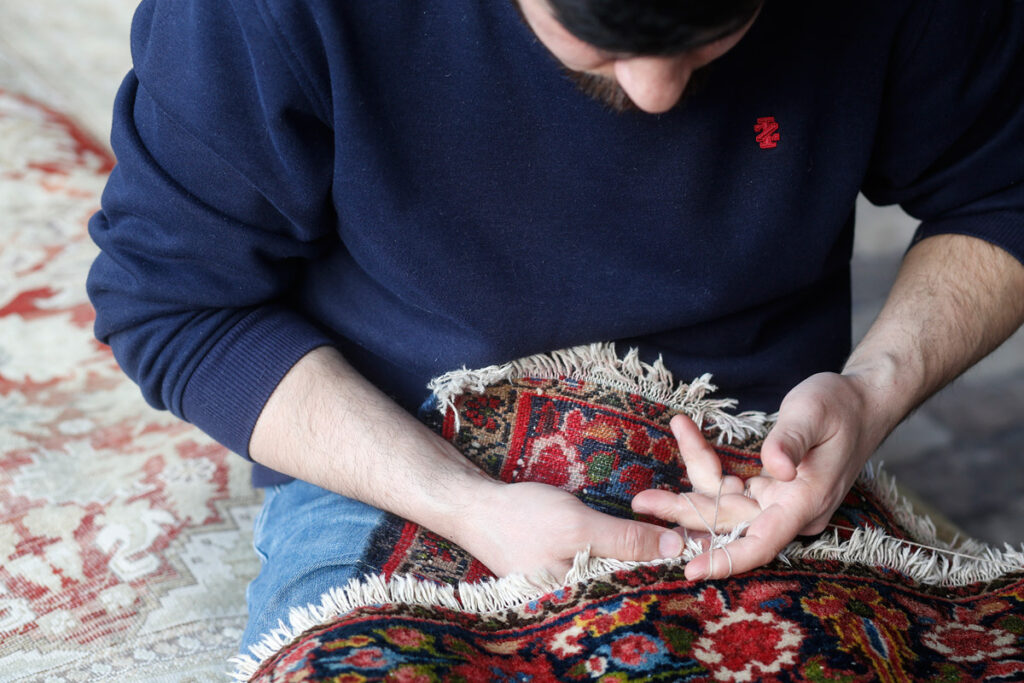
Oriental rugs are prized possessions that add beauty and elegance to any home. However, with time, these rugs can become worn, faded, or damaged due to regular use. When this happens, it’s important to address the issue promptly in order to restore the rug’s original charm and value.
When it comes to restoring and repairing Oriental rugs, there are two main options: DIY (do-it-yourself) or hiring professional services. Both approaches have their own set of pros and cons, so let’s take a closer look at each one.
DIY Repairs:
Pros:
- Cost-effective: One of the biggest advantages of DIY repairs is the potential cost savings. By doing the repairs yourself, you can avoid paying for professional labor costs.
- Convenience: With DIY repairs, you have full control over when and how the repairs are done. You don’t have to schedule appointments or wait for a professional service provider.
- Sense of accomplishment: Completing a repair project on your own can give you a sense of satisfaction and pride in your skills.
Cons:
- Lack of expertise: Restoring an Oriental rug requires specific knowledge and skills that most people do not possess. Without proper training and experience, there is a risk of causing further damage to the rug.
- Time-consuming: Repairing an Oriental rug can be a lengthy process that requires patience and attention to detail. This may not be feasible for individuals with busy schedules.
- Limited resources: DIY repairs often rely on household items or basic tools which may not be sufficient for more complex repairs.
Professional Services:
Pros:
- Expertise and experience: Professional service providers have specialized training in restoring Oriental rugs as well as years of experience in handling different types of damages.
- Quality workmanship: With access to high-quality materials and equipment, professionals can provide more comprehensive restoration services than what is possible through DIY methods.
- Time-saving: Hiring a professional service can save you time and effort, as they have the necessary skills and resources to complete repairs efficiently.
Cons:
- Cost: Professional services can be expensive and may not fit into everyone’s budget.
- Scheduling: Depending on the availability of the service provider, scheduling repairs may take some time.
- Lack of control: When hiring a professional service, you must trust their expertise and may not have as much control over the process as you would with DIY repairs.
Ultimately, the decision between DIY or professional services will depend on your specific situation and preferences. If you have the necessary skills and resources, DIY repairs can be a cost-effective option. However, for more complex damages or if you want quality workmanship, it’s best to hire a professional service provider.
Steps of the Restoration/Repair Process
Restoring and repairing Oriental rugs is a delicate process that requires skilled hands and attention to detail. Whether it’s due to normal wear and tear or unexpected damage, knowing the steps of the restoration/repair process can help you understand when and how to take care of your beloved Oriental rug.
Step 1: Assessment
The first step in restoring or repairing an Oriental rug is assessing its condition. A professional rug expert will carefully examine the rug for any signs of damage, such as worn areas, holes, tears, stains, or fading. They will also check the integrity of the threads and determine the type of fiber used in making the rug.
Step 2: Cleaning
Before any repairs can be made, it is essential to clean the rug thoroughly. This involves removing any dust, dirt, or debris that may have accumulated over time. A gentle cleaning method will be used to avoid causing further damage to the delicate fibers of the rug.
Step 3: Repairing Holes and Tears
If your Oriental rug has holes or tears, this step involves mending them using traditional techniques such as reweaving or patching. The repair specialist will match new threads with those already present in the rug to ensure a seamless repair.
Step 4: Rebuilding Worn Areas
Over time, high traffic areas on an Oriental rug may become worn down due to friction from foot traffic. In this step, these areas are rebuilt using specialized techniques that involve adding new threads onto the existing foundation of the rug.
Step 5: Stain Removal
Stains on an Oriental rug can be tricky to remove without causing discoloration or damaging the fibers. A professional restorationist will use methods specific for each type of stain and carefully treat it without harming the delicate fibers.
Step 6: Color Restoration
If your Oriental rugs’ colors have faded over time due to sunlight exposure or other factors like water damage, color restoration can be done to bring back its vibrancy. This process involves using natural dyes and techniques to restore the rug’s original colors.
Step 7: Finishing Touches
The final step of the restoration/repair process involves giving your Oriental rug a finishing touch. This may include trimming any excess threads, brushing the fibers to give it a soft and fluffy appearance, and adding protective measures such as mothproofing or stain-resistant treatments.
Grasping the process of restoring and repairing Oriental rugs is crucial for making educated decisions about their upkeep. This knowledge ensures that your valued rug receives the proper care to bring it back to its original beauty, allowing it to remain a cherished item for future generations. For insights into rug and carpet care, including tips on choosing qualified cleaning experts and comprehending the benchmarks for rug maintenance, delving into a comprehensive resource can be highly beneficial. Here, you’ll find detailed advice and guidelines designed to aid in the maintenance and preservation of your textiles. Contact us today for a professional roof cleaning.
Tips for Maintaining and Preserving Oriental Rugs
Oriental rugs are not only beautiful works of art, but also valuable investments that require proper maintenance and care. These rugs have been handcrafted using traditional techniques for centuries, making them delicate and susceptible to damage over time. In order to preserve their beauty and extend their lifespan, it is important to follow some tips for maintaining and preserving oriental rugs.
-
Regularly Vacuum
One of the most important steps in maintaining oriental rugs is regular vacuuming. This will help remove dirt, debris, and dust particles that accumulate on the rug’s surface over time. When vacuuming, be sure to use a low suction setting and avoid using the beater bar as it can cause damage to the delicate fibers of the rug.
-
Rotate Your Rug
To prevent uneven wear and tear on your oriental rug, it is recommended to rotate it every 6-12 months. This will ensure that different areas of the rug are exposed to foot traffic evenly, preventing one area from becoming more worn out than others.
-
Protect from Sunlight
Direct sunlight can cause fading or discoloration of your oriental rug’s vibrant colors. To prevent this, avoid placing your rug in an area where it will be exposed to direct sunlight for extended periods of time. If this is unavoidable, consider using window treatments such as curtains or blinds to block out harmful UV rays.
-
Spot Clean Stains Immediately
Accidents happen, but when they do it is important to act quickly in order to minimize damage from spills or stains on your oriental rug. Blot the stain with a clean towel or cloth immediately after it occurs, without rubbing or scrubbing which can push the spill deeper into the fibers.
-
Professional Cleaning
While regular vacuuming and spot cleaning can help maintain your oriental rug’s cleanliness on a day-to-day basis, professional cleaning should also be done every 3-5 years depending on usage. Professional cleaners have the expertise and equipment to deep clean your rug without causing damage, leaving it looking fresh and vibrant.
-
Proper Storage
If you need to store your oriental rug for a period of time, it is important to do so properly in order to prevent damage. Roll the rug with the pile facing inward and make sure it is completely wrapped in acid-free paper or cloth. Avoid using plastic as this can trap moisture and cause mold or mildew growth.
By following these tips for maintaining and preserving oriental rugs, you can ensure that your investment will last for generations to come. Remember to always handle your rug with care and seek professional help if any repairs or restorations are needed. With proper maintenance, your oriental rug will continue to bring beauty and warmth into your home for years to come.
The Importance of Proper Care for Oriental Rugs
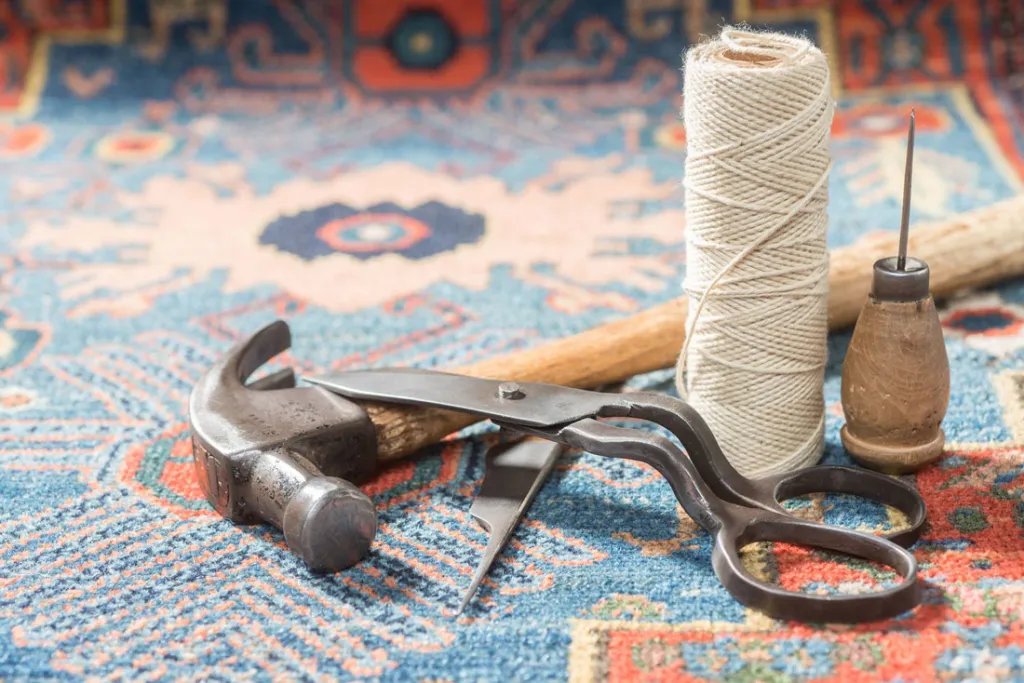
It is clear that proper care and maintenance are essential for preserving the beauty and longevity of oriental rugs. These delicate pieces are not only investments but also hold cultural and sentimental value for many individuals. Therefore, it is crucial to understand the importance of caring for them in the right way.
One of the critical factors in maintaining oriental rugs is regular cleaning. Vacuuming at least once a week can prevent dirt and debris from settling into the fibers, causing damage over time. Additionally, professional cleaning at least once a year can help remove deep-seated dirt and restore the rug’s vibrant colors.
Another aspect to consider is protecting your oriental rug from direct sunlight and high foot traffic areas. Sunlight exposure can cause fading or discoloration over time, while heavy foot traffic can wear down the fibers and lead to fraying or holes. Placing a rug pad underneath your oriental rug can provide cushioning and reduce friction between the rug and floor, helping to prolong its lifespan.
When it comes to repairing or restoring an oriental rug, it is vital to seek professional assistance from experienced weavers. Attempting DIY methods or taking it to an inexperienced individual may result in irreversible damage to your precious piece. A skilled weaver will be able to assess any damages accurately and use suitable techniques to restore your rug’s quality without compromising its originality.
It is also important to address any minor damages promptly before they worsen with time. Holes or tears should be repaired as soon as possible using compatible materials instead of waiting until they become larger and more challenging (and expensive) to fix.
Storing an oriental rug properly when not in use can also contribute significantly towards its preservation. Roll up your rug rather than fold it as folding can cause creases that may be permanent over time. Store in a dry area away from direct sunlight or moisture as these conditions may promote mold growth which could ruin your rug.
Taking good care of your Oriental rug is key to preserving its elegance and worth for years to come. Regular maintenance, alongside timely professional consultations, can significantly extend the life of your cherished rug, helping avoid extensive future expenses. For those dedicated to maintaining woolen textiles, including Oriental rugs, ensuring the use of appropriate cleaning methods and materials is paramount. Delving into resources that offer certified solutions tailored for wool rugs can provide peace of mind that your investment is being cared for with the highest standards. For longevity of your oriental rug, contact us today for a professional cleaning.

